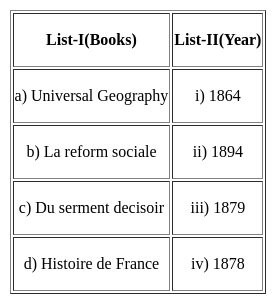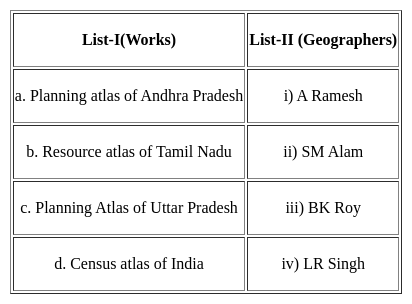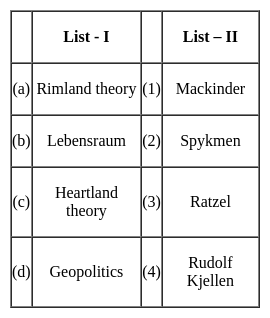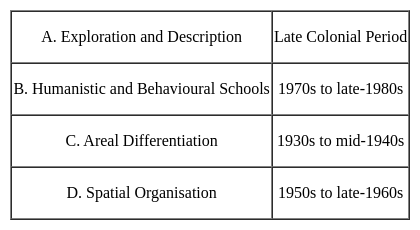Kerala SET Paper 2 Mock Test - 4 (Geography) - KTET MCQ
30 Questions MCQ Test Kerala SET Mock Test Series 2025 - Kerala SET Paper 2 Mock Test - 4 (Geography)
Consider the following States:
1. Karnataka
2. Andhra Pradesh
3. Goa
4. Rajasthan
Which of the above are the major maize-producing states?
Who in 1905 clearly expressed the logical arguments concerning the place of the Earth’s body in the field of Geography?
Biosphere reserves are:
i) area comprising terrestrial, marine and coastal ecosystems.
ii) monitored by national governments.
iii) areas where threatened animals and plants are kept in their habitat.
iv) wildlife sanctuaries.
Choose the correct statements from the options given below:
Which of the following Railway zones and their Headquarters is not correct?
a) The land in the rural urban fringe is cheaper than the land in the central city.
b) Urbanization at a rapid rate takes place in the rural urban fringe as compared to the city.
c) The traffic in the rural urban fringe is high and dense in comparison to the central city.
d) There is ample space for development in the rural urban fringe.
Code:
Match List-I with List-II and select the correct answer from the codes given below :

Choose the correct options from the following:
When does most of the rainfall occur over a large part of the Indian region?
Which of the following states is sole producer of agate, chalk, and perlite in India?
Match the list one with list two.

Choose the correct option from below:
Match the concepts (List - I) with their proponents (List - II) selecting correct answer from the codes given below :

(a) Ratzel applied organic theory to biogeography.
(b) Humboldt was of the opinion that life of people living in islands, plains and mountains was similar.
(c) Kant described the impact of environment in late 18th century.
(d) Darwin’s theory of origin of species is dependent on the idea that the nature changes with time.
Code:
Assertion(A)- Principal component analysis identifies duplicate data over several datasets.
Reasoning(R)-It aggregates only essential information .
(a) Altimetric frequency histograms and curves are two basic techniques to study high lands of geomorphological significance.
(b) Baulig suggested use of grid method to remove deficiencies in altimetric analysis.
(c) The accuracy of altimetric analysis depends upon the benchmarks.
(d) The grid method is used in altimetric analysis when there is deficiency in density of spot heights.
Code:
Read the following statements and state which of them are true?
Spykman's Rimland Theory was a variant of Mackinder's Heartland Model. Both the models emphasised on
Which of the following is not correctly matched:
Approaches - Periods

Process of chemical weathering is represented by-
The Indian state with lowest sex ratio is
The largest number of Tiger Reserves are located in















